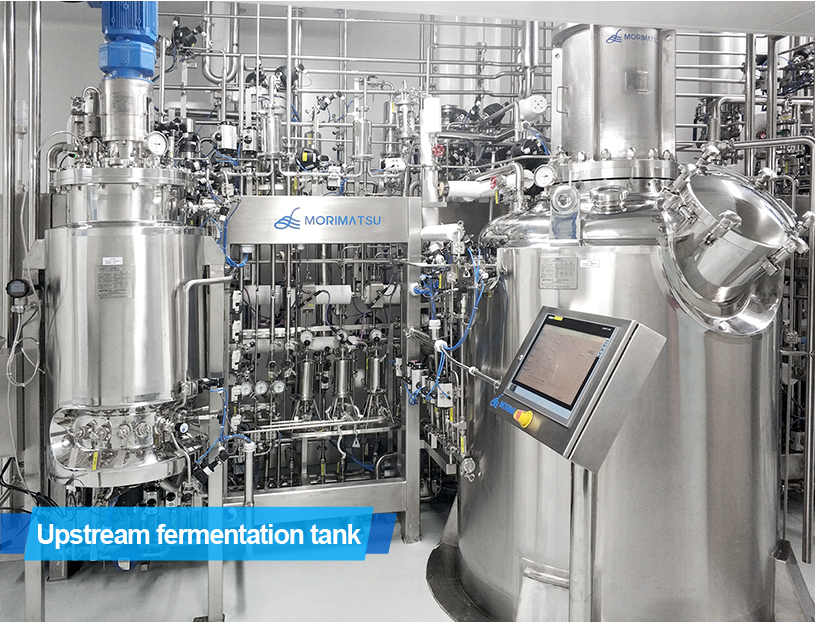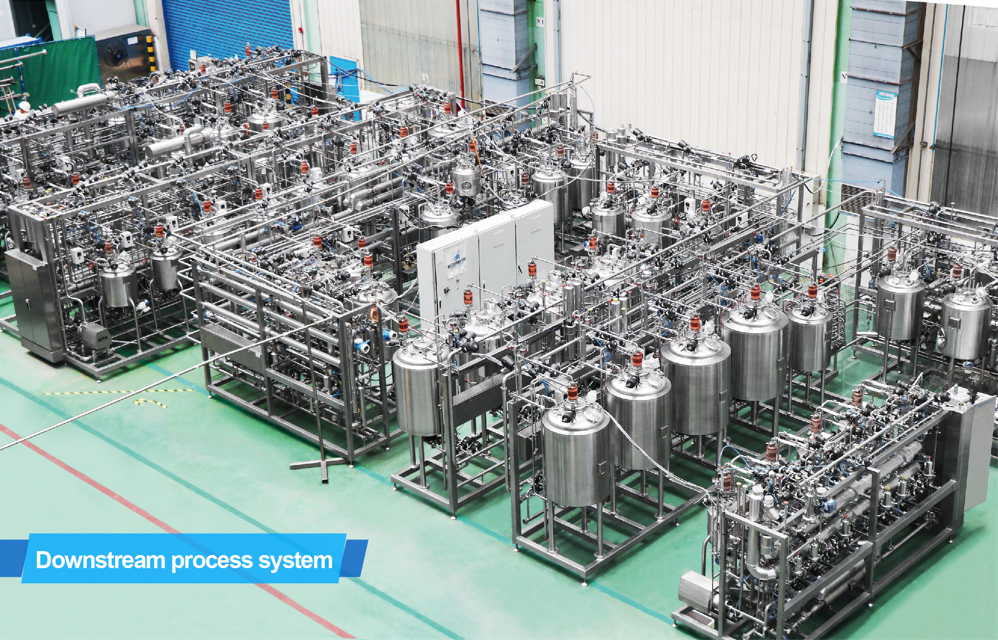Bring Benefits to Females in the World | Morimatsu Contributes to HPV Vaccine Industry Expansion with Advanced Design Concept
The main cause of cervical cancer is persistent infection with high-risk human papilloma virus (HR-HPV). Vaccination is considered the most effective way to prevent cervical cancer. Recent years, with the strong policy support of the government, popularization of vaccine effect and the increasing willingness of women at the right age to get vaccinated, HPV vaccine is seriously short of supply in China. Stimulated by the surging demand for HPV vaccine in the market, Chinese enterprises have been increasing investment in R&D, hoping to stay ahead and bring benefits to females in the world. Currently, there are a dozen of HPV vaccines under development in China. In addition to the bivalent HPV vaccine launched by Xiamen INNOVAX, Polyvalent vaccines developed by Shanghai Zerun, Kangle Weishi, Shanghai Bovax Biotechnology and RECBIO are at Phase 3 clinical trial.
Due to the huge number of HPV-VLP molecule and its special structure, both the developers and producers are confronted with various challenges in respect of product effectiveness and stability, which put a rather high technical requirement for developers and producers wishing to enter the filed of HPV vaccine.
So how is the popular HPV vaccine produced? What are the considerations for overall process and engineering design? We will give you a detailed introduction below.
The production procedure of HPV consists of: culture and expansion of strain, fermentation, thalli cleaning, disruption, ultrafiltration clarification, coarse purification, fine purification, depolymerization and reorganization to get the monovalent stock solution. The stock solution is mixed and absorbed with adjuvant diluent to get the monovalent semi-finished product. Multivalent semi-finished product is obtained by mixing isopyknic multiple monovalent semi-finished products, and the finished product is obtained after filling. Valency of HPV vaccine represents the type of virus it can prevent. The higher the valency is, the more types of virus it is effective for. Production system gets more complicated with the increase of valency.
In the upstream production, the mainstream process for domestic HPV under development are E.coli expression and Hanson yeast expression with insect cell production system adopted by a few enterprises. For bioreactor and fermentation system as the core equipment in the upstream production, a stable environment for high density growth of bacterial or cell is the key to realize high yield rate and stable expression of HPV virus-like particles.
Key factors for design of the fermentation system as the core equipment in the upstream production include:
- Well-designed CIP and SIP process to ensure sterility of system and reduce the risk of system pollution;
- Precise temperature control to ensure small fluctuation of temperature in the whole process of fermentation;
- High density circulating flow to ensure small fluctuation of pH value in the tank and enable fast dispersion of feeding medium;
- Flow field of high shear to support supply of dissolved oxygen for the high density growth of thalli;
- The control system shall provide formulation function to ensure the consistency between batches.

Considerations in the design of downstream production include:
- The yield rate of monovalent VLP stock solution of different types in the expression vector may differ up to 5 times. Attention shall be paid to match of upstream and downstream production scale, elimination of production bottleneck. Closed system is recommended and the strategy of CIP/SIP shall reduce the time and cost of cleaning for different species so as to maximize production capacity.
- The buffer solution system is indispensable for a sound downstream purification process. With the wide application of PAT technology in the field of biopharmacy, the preparation and storage center of buffer solution in the vaccine field has been transitioning to the new modes of on-line dilution and preparation. Regarding the difference of buffer solution consumption in different types of downstream processes, the efficient link between the purification system and the buffer solution system shall be considered in the stage of design and planning.
- The CIP system may realize automatic cleaning for production between lots and shift of types. During design, the service load and flexibility of deployment of each CIP station shall be considered to maximize the economy of each CIP station. In addition, attention shall be paid to elimination of pollution and cross contamination to meet the quality requirement of GMP production.

Considering the complexity and systematicness of polyvalent HPV vaccine design, many factors shall be taken into account during the design. This article only provides a general introduction due to space constraint.
Engineering design of HPV vaccine features high technology difficulty. Companies working on polyvalent HPV vaccine must have a strong technology strength. Developers mentioned above have all choose to cooperate with Morimatsu International for its efficient bioreactor, fementation tank, purification device, fluid preparation for drug product and adjuvant devices as well as process system and overall engineering. In addition to its superior quality, our deep insight into HPV vaccine technology and advanced design concept are also the reasons for top developers to choose Morimatsu.
As one of the earliest domestic companies to develop HPV vaccine process and engineering design, we are a professional company to provide core equipment and process system while closely monitoring the development trend and layout of industry. We are committed to helping our clients to complete the process from clinical development to large scale production within the shortest time so as to meet the surging market demand and bring benefits to females in the world.
About Shanghai Morimatsu Pharmaceutical Equipment Engineering Co., Ltd.
Founded in Japan and basing in China, Morimatsu has developed into a diversified multinational company which has rich experience and core technology in core equipment, process system and project solutions. Replying on the advanced manufacturing base in China, Morimatsu opened affiliated companies in Sweden, USA, India and Italy. It has delivered different products and services for more than 40 countries to date. Shanghai Morimatsu Pharmaceutical Equipment Engineering Co., Ltd. is a wholly-owned subsidiary of Morimatsu International Holdings Company Limited. Morimatsu International Holdings Company Limited (stock abbreviation: Morimatsu International, stock code: 2155.HK) was successfully listed in June 2021.






